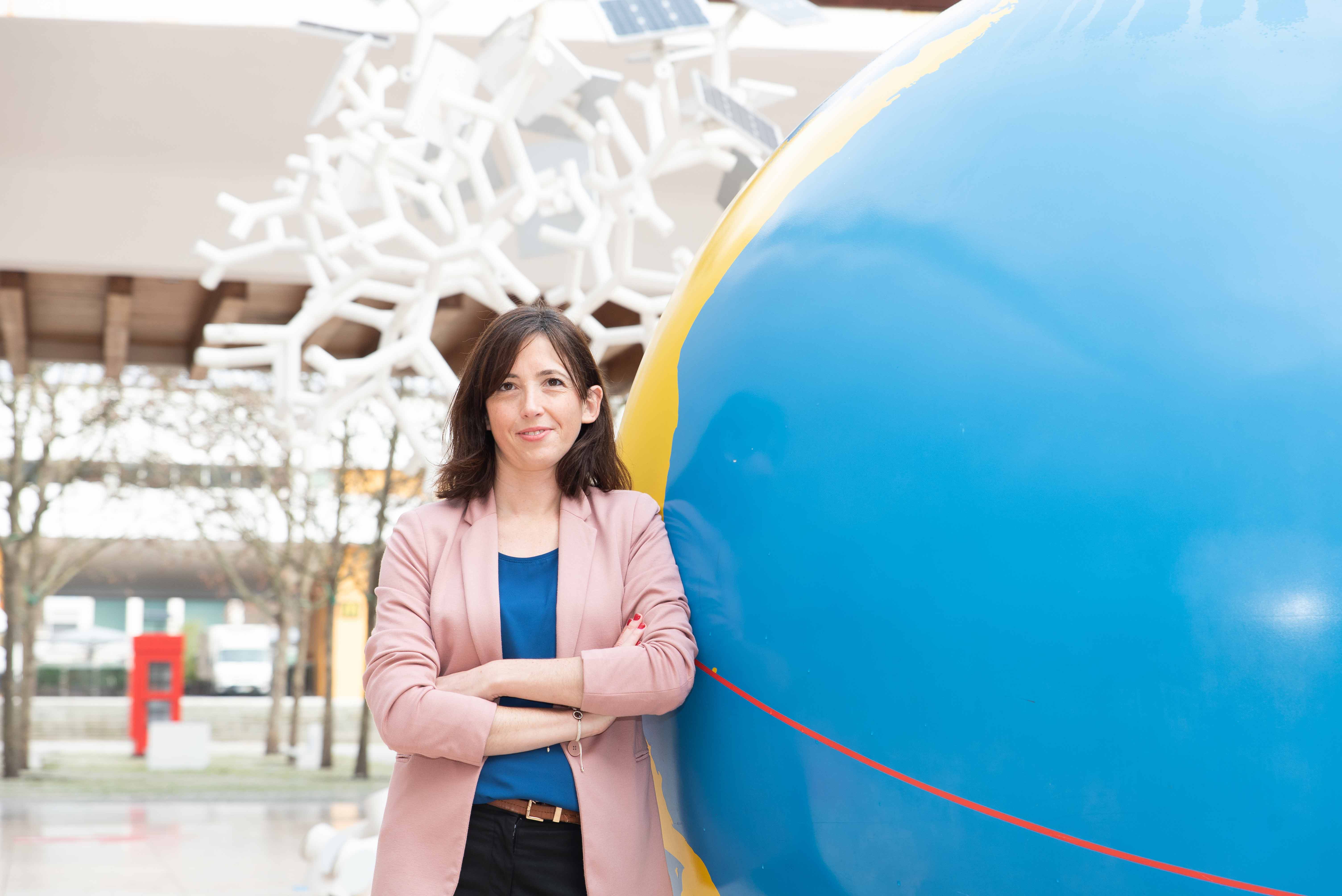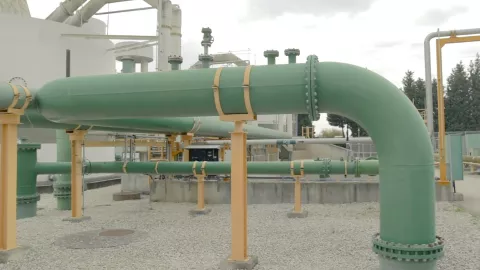"Portugal was one of the first countries in the world to make a commitment to carbon neutrality by 2050"
Patrícia Fortes, Researcher at Universidade Nova de Lisboa
What is the potential of green hydrogen in the national energy system until 2050? This was the central issue of a study by the Center for Environmental and Sustainability Research, of the Faculty of Sciences and Technology of the Universidade Nova de Lisboa (FCT/NOVA) in collaboration with UNIDEMI (research center for the Department of Mechanical Engineering and Industrial Production of FCT/NOVA) and EDP. Researcher Patrícia Fortes presents some of the conclusions.
The potential of hydrogen has been discussed for many years, but only now does the subject seem to become more important. What is new?
Above all, it has to do with the urgent need for carbon dioxide mitigation. Civil society and political decision are more open to this issue and have finally understood the message that scientists have been sending out. Now it has become clear that the consequences can be catastrophic if we do nothing. Studies show that we must drastically reduce greenhouse gas emissions in order to minimize these impacts. Thus, all mitigation options, including hydrogen, have to be considered.
Another very important aspect has to do with cost reduction. Ten years ago, the price of solar energy was almost 90% higher than today's price. Wind power also had a significant reduction. The fact that there has been a very significant reduction in the price of renewable energy means that the production of green hydrogen has become increasingly competitive and attractive.
A study has been promoted by EDP Produção to analyse the impact of H2 on the electricity-generating system in Portugal. What are the main conclusions of this study?
The purpose of this study was to evaluate the role of hydrogen in the national energy system in a carbon-neutral scenario until 2050, considering its cost-effectiveness (because there are other factors that may or may not promote H2, which we have not been analysed).
The study concluded that hydrogen is an important vector in national decarbonization. Several scenarios were simulated and in 2050, the average cost of CO2 reduction increases 1.5 times, when H2 is not an available option. Together with other decarbonization strategies, from energy efficiency to renewable energy, hydrogen will play an important role. For example, assuming the use of hydrogen for the national energy system alone, without considering any exports, in 2030, hydrogen can contribute up to 2% to the final energy consumption. In 2050, it can be 18% associated to a production cost of about 3 euros for kilogram of hydrogen in 2030 and 2 euros in 2050.
Is it possible to achieve the goals for decarbonization without H2?
Without this energy vector, there is an increase in the average cost of decarbonization. Our study concludes that, in 2050, we reached an average cost of about 280 euros per tonne of CO2, and, as I said, this value can increase 1.5 times without the presence of H2. In other words, it will be possible, but at a much higher cost.
knowledge
Hydrogen: a key element for carbon neutrality
In a world dependent on fossil fuels, hydrogen has a central role in accelerating this change and achieving decarbonization of the economy.

And what can be done to implement this system?
Considering only the national system, without exports, we will have to install electroloysers, which are the solution that in our study appears as the most effective. The installed electrolysis capacity is expected to grow from 0.5 GW in 2030 to 4.5 GW in 2050. The role of hydrogen in decarbonizing the national heavy haulage of goods and passengers will be very important and conditions need to be created for the emergence of new fuel-cell fleets, namely the development of a supply infrastructure. We can't neglect the role of H2 in decarbonization in high temperature heat-consuming industries, especially when decarbonization targets become increasingly restrictive and close to carbon neutrality. And, once again, it is necessary to create conditions for these industries to be able to make such investments. The study did not focus on the policies and instruments needed to implement an H2 system, just what is the optimal cost-effective configuration of this system in Portugal.
How do you anticipate the final use of natural gas with the input of H2? What will happen to the existing infrastructure?
What is talked about a lot is the introduction of H2 into the gas network. The national strategy of H2 has very strong values in this respect. For us it is not yet 100% clear what the maximum percentage at which H2 can be incorporated into the gas transmission network is or what investment is needed to reconvert the gas network to allow for the transport of hydrogen. It is something that requires a very in-depth study. There are different experts on the subject, with different perspectives. Some say that because our gas transmission network is one of the most recent in Europe, there is that possibility and there is no need for a very deep retrofitting; and some say no, because there are limitations associated with the embrittlement of H2 with steel.
Is it possible that these assets will become idle in the future?
Yes, that is possible, or alternatively, which is quite discussed, this gas network can be used for injecting renewable gases such as biogas or injecting synthetic methane produced by green hydrogen. It is a possibility to extend the use of the gas network without the emissions associated with natural gas.

Does it really make sense to use H2 for storage and electricity generation?
In our study this option was not cost-effective because the entire process of using electricity to generate H2, store it and then turn hydrogen back into electricity is much less efficient than directly using electricity. But this result can also be a limitation of our modeling tool that does not simulate the balance between supply and demand at the time level or even with higher temporal resolution, H2 can play an important role in network management, in its flexibility. The literature tends to show that H2 can be an alternative in storage, especially since batteries, for example, can only offer temporary storage, while hydrogen can allow long-term storage.
Can you conceive of an electricity-producing system based only on renewable generation? Within what time frame?
In the long run, I believe it is possible. It will be necessary to achieve high levels of decarbonization. I am not an electro technician, but I want to believe it will be possible after 2030. If it is not 100% renewable, it will be close to that. Obviously, there will have to be a large support in storage, in batteries and, also, in pumping. The network must be very flexible. There must be a shift to the so-called smart grids. Electricity interconnections between countries, in our case between Portugal and Spain, later with the rest of Europe, will also contribute positively to develop 100% renewable electricity.

The literature tends to show that H2 can be an alternative in storage, especially since batteries, for example, can only offer a temporary storage, while hydrogen can allow long-term storage.
Patrícia Fortes, Researcher at Universidade Nova de Lisboa
In which sectors will the use of H2 be effective?
There is much talk, for example, at the international level of the role of H2 for the industry as feedstock for the production of ammonia and iron and steel, decarbonizing these sectors. But what is currently happening in Portugal is that we do not produce iron and primary steel, and we no longer produce ammonia. Obviously, we could consider scenarios that were not taken into account in our study, such as the resurgence of this industry. It may be a national strategy in the future, but it goes beyond what we have considered and know.
How do you think Portugal can stand before the European partners on this decarbonization path? Are we really an example?
Portugal was one of the first countries in the world to commit to carbon neutrality by 2050. After us, several others have set this goal, including the European Union itself. If we look at the Climate Energy Plans of the different Member States, we also see that Portugal has one of the most ambitious targets for renewable energy consumption for 2030. And, therefore, assuming that these goals will be met, we are a positive example. The first step has been taken, but just setting targets is not enough, we need to create effective measures and instruments to achieve them.



